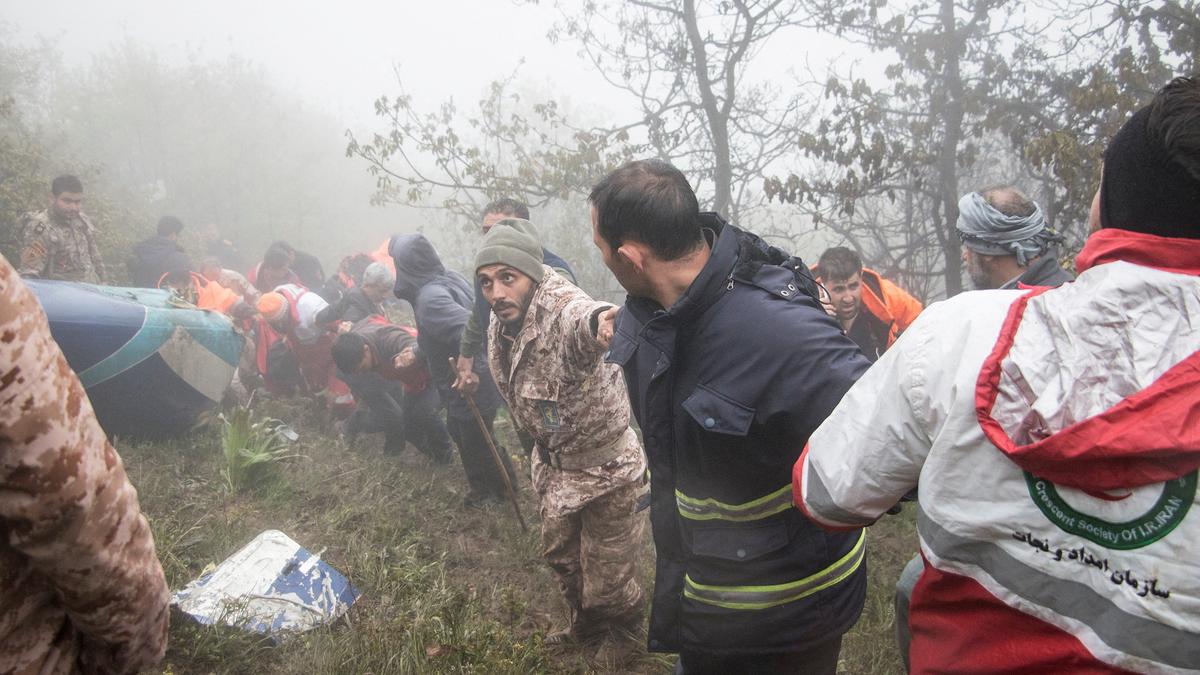The tragic helicopter crash in May that claimed the lives of Iran’s President Ebrahim Raisi and seven other prominent figures has been attributed to challenging climatic and atmospheric conditions, according to an official investigation. The Supreme Board of the General Staff of the Armed Forces released a final report highlighting the complex weather patterns in the region during the spring as the primary cause of the accident.
Challenging Climatic Conditions as the Primary Culprit
The investigation pointed towards a confluence of unfavorable weather elements as the primary driver of the crash. The report emphasized the “complex climatic conditions” of the region during the spring season, suggesting a unique interplay of weather patterns that made the area prone to sudden and potentially hazardous changes. The presence of dense fog, rapidly rising upwards, played a crucial role in the tragedy. This sudden fog obscured visibility, potentially hindering the helicopter’s ability to navigate safely, ultimately leading to the fatal collision with the mountain.
Fog as a Key Factor
The investigation pinpointed the abrupt appearance of a thick mass of dense fog as a pivotal moment in the events leading to the crash. The report details how this fog “rose upwards” immediately before the collision, dramatically impacting visibility. This lack of visibility, coupled with the mountainous terrain, likely contributed to the pilot’s inability to effectively navigate and avoid the obstacle, leading to the disastrous impact.
Sabotage Ruled Out
The report, based on a comprehensive analysis, concluded that sabotage was not a contributing factor in the crash. An extensive examination of the wreckage revealed no evidence of any external interference or tampering with the aircraft’s systems. This determination eliminates the possibility of foul play or a deliberate attack and places the sole responsibility for the tragedy on the confluence of unfavorable atmospheric conditions.
Comprehensive Investigation
The report emphasizes a meticulous investigation, spanning weeks, focused on understanding the chain of events leading to the crash. The inclusion of experts from various disciplines, including aviation safety specialists, meteorological analysts, and structural engineers, underscores the commitment to a thorough and independent evaluation of all available data. This commitment to a comprehensive examination is a crucial element in ensuring transparency and providing credible explanations for such tragedies.
The Legacy of the Fallen Leaders
The loss of President Raisi and his high-level cabinet members, including the foreign minister Hossein Amirabdollahian, represented a significant blow to the Iranian government and a deeply felt tragedy across the nation. The deaths sent shockwaves throughout the country and abroad, sparking an outpouring of grief and sympathy for the bereaved families and the nation as a whole. The collective mourning highlighted the impact of the leaders’ roles and the deep loss they represent for the Iranian people.
Moving Forward: Lessons Learned
While the crash has undoubtedly left a permanent mark, the lessons gleaned from the official investigation offer crucial insight into aviation safety, particularly in challenging geographical and meteorological conditions. Understanding the specific combination of weather elements that led to this tragedy has the potential to inform future regulations, pilot training programs, and airspace management strategies in similar regions, enhancing safety protocols and minimizing the likelihood of future similar events. The official report serves as a reminder of the fragility of life and the imperative to constantly assess and adapt aviation practices in light of evolving safety considerations.
Takeaway Points:
- Weather was the primary cause: Complex climatic conditions and a sudden dense fog rise were identified as the leading factors contributing to the fatal helicopter crash.
- No signs of sabotage: The thorough investigation conclusively ruled out sabotage as a cause of the crash.
- Focus on lessons learned: The findings provide valuable information for future aviation safety strategies, particularly in challenging geographical and meteorological environments.
- The loss is deeply felt: The passing of President Raisi and other top officials represents a profound loss for Iran, underscored by the nationwide mourning and sympathy expressed.









